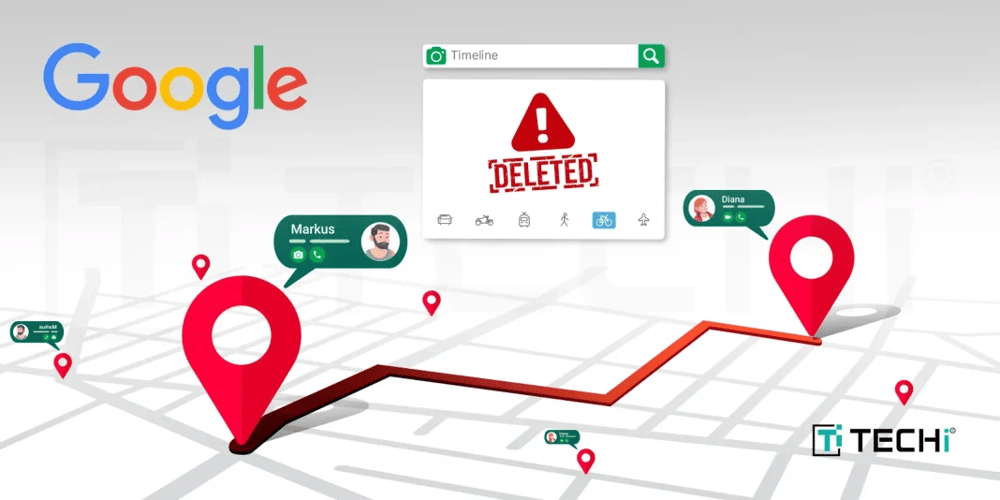Llama 4: Breaking Down Meta's Latest Powerhouse Model
At lingo.dev, we're always on top of the latest models to ensure our translations are perfect. So when Meta released Llama 4, I immediately dug into what makes it special and how we developers can leverage its power without the infrastructure headaches. What Makes Llama 4 a Game-Changer? As a developer who's seen plenty of "revolutionary" AI models come and go, I approached Llama 4 with healthy skepticism. But after spending time with it, I'm genuinely impressed by several key innovations: Mixture of Experts Architecture: Intelligence Without the Bloat Llama 4 introduces a fascinating Mixture of Experts (MoE) architecture that's worth unpacking. The Llama 4 lineup includes two models: Llama 4 Scout: 109B total parameters but only 17B active parameters with 16 experts Llama 4 Maverick: A massive 400B total parameters with 17B active parameters and 128 experts What's fascinating is how this architecture works. Unlike traditional monolithic models, MoE models consist of specialized neural networks (the "experts") with a "router" component that directs incoming tokens to the appropriate experts. Here's what makes this impressive: when you ask Llama 4 to write code, it activates the coding experts while leaving the others dormant. This means you get specialized performance without the full computational load of a 109B parameter model. In practical terms: faster responses that remain highly intelligent. Massive Context Window Llama 4 Scout supports a context window of up to 10 million tokens - one of the first open models with this capability. While Cloudflare currently supports 131,000 tokens (still substantial), they're working to increase this limit. For developers, this means: Processing entire codebases for analysis Summarizing multiple documents in one go Maintaining longer, more coherent conversations with context Building more sophisticated RAG (Retrieval Augmented Generation) systems Native Multimodality with Early-Fusion Unlike Llama 3.2, which used separate parameters for text and vision, Llama 4 uses an early-fusion architecture where all parameters natively understand both text and images. This is a significant architectural improvement - previous multimodal approaches required chaining separate models together. With Llama 4, it's all integrated, making multimodal applications simpler to build and more coherent in execution. Getting Started with Llama 4 on Cloudflare The most exciting part for developers: you don't need to provision expensive GPU clusters or manage complex infrastructure. Cloudflare handles all that through their Workers AI platform. Let's dive into implementation with three different approaches: Approach 1: Using the REST API For quick testing or language-agnostic applications: curl --request POST \ --url https://api.cloudflare.com/client/v4/accounts/{ACCOUNT_ID}/ai/run/@cf/meta/llama-4-scout \ --header 'Authorization: Bearer {API_token}' \ --header 'Content-Type: application/json' \ --data '{ "messages": [ { "role": "system", "content": "You are a helpful AI assistant." }, { "role": "user", "content": "What makes Mixture of Experts models efficient?" } ] }' You'll need to get your Account ID and API token first, which you can obtain from the Cloudflare dashboard under AI > Workers AI > Use REST API. Approach 2: Using Workers & Wrangler For a more integrated serverless approach, you can use Cloudflare Workers: Create a new Worker project: npm create cloudflare@latest Add the AI binding to your wrangler.json: { "name": "llama4-demo", "main": "src/index.js", "compatibility_date": "2023-10-30", "ai": { "binding": "AI" } } Implement the Worker in src/index.js: export default { async fetch(request, env) { const response = await env.AI.run('@cf/meta/llama-4-scout', { messages: [ { role: "system", content: "You are a helpful AI assistant." }, { role: "user", content: "Explain MoE architecture in simple terms." } ] }); return new Response(JSON.stringify(response), { headers: { 'content-type': 'application/json' } }); } }; Deploy with npx wrangler deploy Approach 3: Building a RAG System One of the most powerful applications of Llama 4 is building a Retrieval Augmented Generation system, which can leverage that massive context window: export default { async fetch(request, env) { // Retrieve documents from your database const documents = await getRelevantDocuments(request); // Prepare prompt with retrieved documents const documentsText = documents.map(doc => doc.content).join("\n\n"); const response = await env.AI.run('@cf/meta/llama-4-scout', { messages: [ { role: "system", content: "You are a helpful AI assistant." }, { role: "user", content: `Ba

At lingo.dev, we're always on top of the latest models to ensure our translations are perfect. So when Meta released Llama 4, I immediately dug into what makes it special and how we developers can leverage its power without the infrastructure headaches.
What Makes Llama 4 a Game-Changer?
As a developer who's seen plenty of "revolutionary" AI models come and go, I approached Llama 4 with healthy skepticism. But after spending time with it, I'm genuinely impressed by several key innovations:
Mixture of Experts Architecture: Intelligence Without the Bloat
Llama 4 introduces a fascinating Mixture of Experts (MoE) architecture that's worth unpacking. The Llama 4 lineup includes two models:
- Llama 4 Scout: 109B total parameters but only 17B active parameters with 16 experts
- Llama 4 Maverick: A massive 400B total parameters with 17B active parameters and 128 experts
What's fascinating is how this architecture works. Unlike traditional monolithic models, MoE models consist of specialized neural networks (the "experts") with a "router" component that directs incoming tokens to the appropriate experts.
Here's what makes this impressive: when you ask Llama 4 to write code, it activates the coding experts while leaving the others dormant. This means you get specialized performance without the full computational load of a 109B parameter model. In practical terms: faster responses that remain highly intelligent.
Massive Context Window
Llama 4 Scout supports a context window of up to 10 million tokens - one of the first open models with this capability. While Cloudflare currently supports 131,000 tokens (still substantial), they're working to increase this limit.
For developers, this means:
- Processing entire codebases for analysis
- Summarizing multiple documents in one go
- Maintaining longer, more coherent conversations with context
- Building more sophisticated RAG (Retrieval Augmented Generation) systems
Native Multimodality with Early-Fusion
Unlike Llama 3.2, which used separate parameters for text and vision, Llama 4 uses an early-fusion architecture where all parameters natively understand both text and images.
This is a significant architectural improvement - previous multimodal approaches required chaining separate models together. With Llama 4, it's all integrated, making multimodal applications simpler to build and more coherent in execution.
Getting Started with Llama 4 on Cloudflare
The most exciting part for developers: you don't need to provision expensive GPU clusters or manage complex infrastructure. Cloudflare handles all that through their Workers AI platform.
Let's dive into implementation with three different approaches:
Approach 1: Using the REST API
For quick testing or language-agnostic applications:
curl --request POST \
--url https://api.cloudflare.com/client/v4/accounts/{ACCOUNT_ID}/ai/run/@cf/meta/llama-4-scout \
--header 'Authorization: Bearer {API_token}' \
--header 'Content-Type: application/json' \
--data '{
"messages": [
{
"role": "system",
"content": "You are a helpful AI assistant."
},
{
"role": "user",
"content": "What makes Mixture of Experts models efficient?"
}
]
}'
You'll need to get your Account ID and API token first, which you can obtain from the Cloudflare dashboard under AI > Workers AI > Use REST API.
Approach 2: Using Workers & Wrangler
For a more integrated serverless approach, you can use Cloudflare Workers:
- Create a new Worker project:
npm create cloudflare@latest
- Add the AI binding to your
wrangler.json:
{
"name": "llama4-demo",
"main": "src/index.js",
"compatibility_date": "2023-10-30",
"ai": {
"binding": "AI"
}
}
- Implement the Worker in
src/index.js:
export default {
async fetch(request, env) {
const response = await env.AI.run('@cf/meta/llama-4-scout', {
messages: [
{ role: "system", content: "You are a helpful AI assistant." },
{ role: "user", content: "Explain MoE architecture in simple terms." }
]
});
return new Response(JSON.stringify(response), {
headers: { 'content-type': 'application/json' }
});
}
};
- Deploy with
npx wrangler deploy
Approach 3: Building a RAG System
One of the most powerful applications of Llama 4 is building a Retrieval Augmented Generation system, which can leverage that massive context window:
export default {
async fetch(request, env) {
// Retrieve documents from your database
const documents = await getRelevantDocuments(request);
// Prepare prompt with retrieved documents
const documentsText = documents.map(doc => doc.content).join("\n\n");
const response = await env.AI.run('@cf/meta/llama-4-scout', {
messages: [
{ role: "system", content: "You are a helpful AI assistant." },
{ role: "user", content: `Based on these documents:\n\n${documentsText}\n\nAnswer: What are the key insights?` }
]
});
return new Response(JSON.stringify(response), {
headers: { 'content-type': 'application/json' }
});
}
};
For a complete RAG tutorial, check out Cloudflare's documentation on building RAG systems.
My Opinion
My natural skepticism led me to thoroughly test Llama 4 against its predecessors and alternatives. Here are my honest observations:
- Performance vs. Resource Efficiency: The MoE architecture delivers on its promise. Response times are noticeably faster than comparable models, especially for specialized tasks where only a few experts activate.
- Context Window Reality Check: While 10 million tokens is the theoretical limit, Cloudflare's current implementation supports 131,000 tokens. This is still impressive compared to many alternatives, but know the practical limitations.
- Multimodal Capabilities: Early-fusion multimodality works surprisingly well. Image understanding is more coherent and contextually relevant than with previous approaches that bolted vision capabilities onto text models.
- Open Source Benefits: Unlike closed models, you can run Llama 4 on your own infrastructure if needed, though Cloudflare's serverless approach removes much of this complexity.
Compared to Previous Models
Having worked extensively with Llama 3.1/3.2, the improvements in Llama 4 are substantial:
- Architecture: The shift to MoE from a monolithic architecture is the most significant change, providing better performance with more efficient resource utilization.
- Multimodality: Llama 3.2 had vision capabilities but used separate parameters. Llama 4's early-fusion approach provides more coherent multimodal reasoning.
- Context Window: From 8K tokens in early Llama models to potentially 10M tokens is a quantum leap that enables entirely new application categories.
Building Production Applications
For those ready to build real applications with Llama 4, consider:
- OpenAI API Compatibility: The openai-cf-workers-ai project provides OpenAI API compatibility, allowing you to use existing OpenAI SDK code with Llama 4.
- Integration with Other Tools: Llama 4 integrates smoothly with tools like n8n for workflow automation and continue.dev for code assistance.
- Vision Applications: For multimodal applications, you can follow similar patterns to the Llama 3.2 vision tutorial, adapting for Llama 4's unified architecture.
Conclusion
Llama 4 represents a genuine advancement in open-source AI model architecture, and Cloudflare's implementation makes it accessible without the usual infrastructure headaches. The MoE architecture combined with early-fusion multimodality creates a model that's not just more efficient, but qualitatively better for many applications.
As a developer who's seen many "revolutionary" models come and go, I'm genuinely impressed with what Meta and Cloudflare have delivered here. The serverless approach removes traditional barriers to advanced AI implementation, making these capabilities available to developers of all sizes.
Have you tried Llama 4 yet? What applications are you building with it? Share your experiences in the comments!
Resources:
About the Author
My name is Max, and I'm working on Lingo.dev. At Lingo.dev, we're building open-source libraries + cloud translation APIs, that enable dev teams ship web and mobile apps in tens of languages, with accurate translations, in minutes instead of weeks. Sign up on Lingo.dev, or follow me on X.











































































































































































![[The AI Show Episode 142]: ChatGPT’s New Image Generator, Studio Ghibli Craze and Backlash, Gemini 2.5, OpenAI Academy, 4o Updates, Vibe Marketing & xAI Acquires X](https://www.marketingaiinstitute.com/hubfs/ep%20142%20cover.png)




























































































































![[DEALS] The Premium Learn to Code Certification Bundle (97% off) & Other Deals Up To 98% Off – Offers End Soon!](https://www.javacodegeeks.com/wp-content/uploads/2012/12/jcg-logo.jpg)


![From drop-out to software architect with Jason Lengstorf [Podcast #167]](https://cdn.hashnode.com/res/hashnode/image/upload/v1743796461357/f3d19cd7-e6f5-4d7c-8bfc-eb974bc8da68.png?#)








































































































.png?#)

































_Christophe_Coat_Alamy.jpg?#)
 (1).webp?#)





































































































![Apple Considers Delaying Smart Home Hub Until 2026 [Gurman]](https://www.iclarified.com/images/news/96946/96946/96946-640.jpg)
![iPhone 17 Pro Won't Feature Two-Toned Back [Gurman]](https://www.iclarified.com/images/news/96944/96944/96944-640.jpg)
![Tariffs Threaten Apple's $999 iPhone Price Point in the U.S. [Gurman]](https://www.iclarified.com/images/news/96943/96943/96943-640.jpg)




































































































































